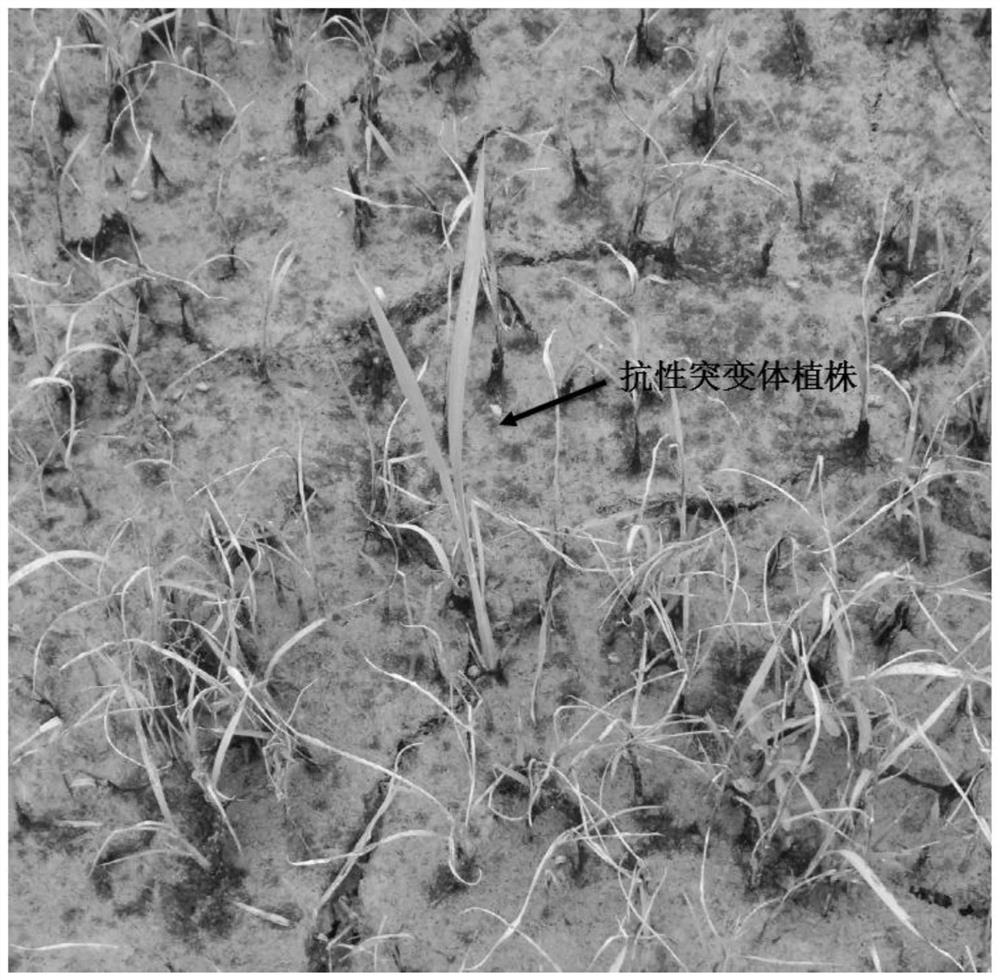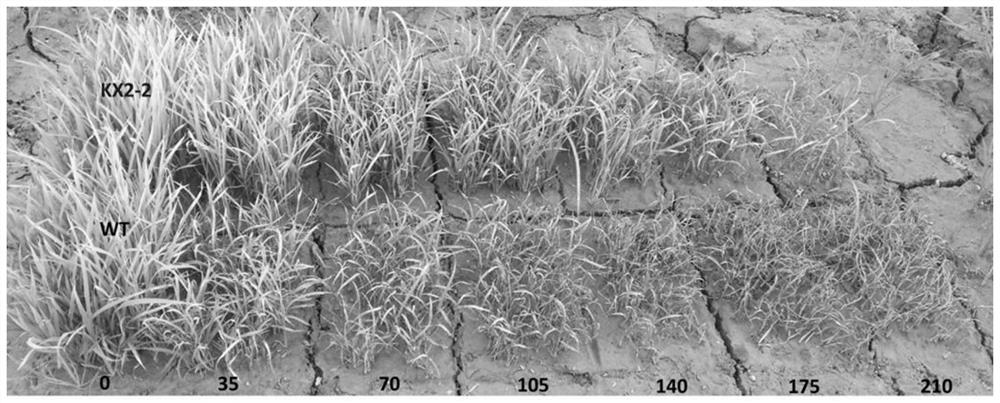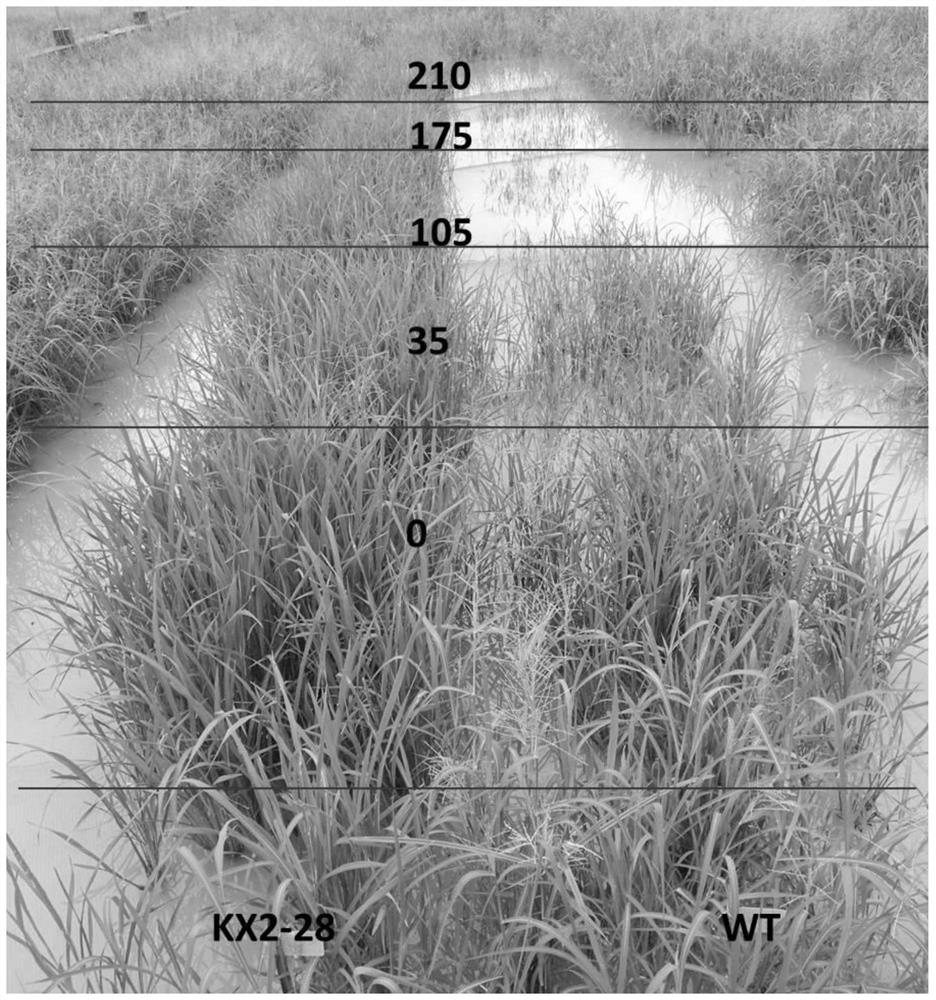Herbicide-resistant mutants and their uses
A herbicide and resistance technology, applied in herbicide-resistant mutants and its application in plant breeding, can solve the problems of large residues of sulfonylurea herbicides, low drug efficacy, and large environmental pollution
- Summary
- Abstract
- Description
- Claims
- Application Information
AI Technical Summary
Problems solved by technology
Method used
Image
Examples
Embodiment 1
[0045] Example 1. Mutation to obtain a mutant resistant to clethodim herbicides
[0046] Sow the seeds of Huanghuazhan rice. Before sowing, soak the seeds of Huanghuazhan in water in a 25°C incubator for 22 hours, then remove the seeds and control the moisture. Then, the rice seeds were soaked with 0.7% (w / w) ethyl methanesulfonate (EMS) for 12 hours, during which time the seeds were shaken every 1 hour. After 12 hours, discard the EMS solution, change the tap water to soak the seeds, discard the tap water, and repeat the soaking for a total of 5 times, soaking for 5 minutes each time, and then rinse the seeds with tap water for 2 hours, turning the seeds during the rinsing process to wash the EMS. Take a small amount of seeds and put them on the surface of wet paper, put them in a 28°C incubator, measure the germination rate of 60-70%, and sown the remaining seeds in the field. After the plants are mature, they are harvested in plots, each plot area of 30 square meters, mi...
Embodiment 2
[0047] Example 2. Genome sequence analysis of clethodim-resistant herbicide mutants
[0048] Take the leaves of the above-mentioned rice mutant plants, together with the leaves of wild-type Huang Huazhan, extract their genomic DNA respectively, and entrust Shenzhen BGI Research Institute for sequencing. Coenzyme A carboxylase (ACCase) is mutated at the 5372nd position, from A to G, resulting in the 1791st position of the corresponding encoded protein from asparagine to serine. The nucleotide sequence of the mutated ACCase gene As shown in SEQ ID NO: 4, the amino acid sequence of the ACCase protein encoded by it is shown in SEQ ID NO: 5. After backcross purification, a stable line KX2-28 was obtained after self-cross propagation; the other three mutant plants had Acetyl-CoA carboxylase (ACCase) has been mutated at the same point. The specific mutation is that the 5374th position of the ACCase gene is mutated, changing from A to T, resulting in the 1792th position of the corresp...
Embodiment 3
[0049] Example 3. Seedling stage spraying experiment of mutants KX2-2, KX2-28 and KX3-89
[0050] The obtained mutant lines KX2-2, KX2-28, KX3-89 and wild-type Huanghuazhan seeds (WT) of rice resistant to ACCase inhibitor herbicides were sown separately. Wild-type rice seeds (WT) and mutant KX2-2 were sprayed with 0, 35, 70, 105, 140, 175, 210 g a.i. / hm at the 4-leaf stage, respectively 2 The applied dose of clethodim confirms resistance, and the experimental results are as follows figure 2 shown at 35g a.i. / hm 2 Under the treatment of clethodim, the wild-type Huanghua accounted for most of the death, and the growth and development were greatly affected, while KX2-2 was not affected by clethodim and showed strong clethodim resistance; when clethodim was applied Doses up to 105g a.i. / hm 2 At the time, the wild type Huanghua accounted for all deaths, while the resistant mutant line KX2-2 still survived about 40%.
[0051] Wild-type rice seeds (WT) and mutant line KX2-28 wer...
PUM
 Login to View More
Login to View More Abstract
Description
Claims
Application Information
 Login to View More
Login to View More - R&D
- Intellectual Property
- Life Sciences
- Materials
- Tech Scout
- Unparalleled Data Quality
- Higher Quality Content
- 60% Fewer Hallucinations
Browse by: Latest US Patents, China's latest patents, Technical Efficacy Thesaurus, Application Domain, Technology Topic, Popular Technical Reports.
© 2025 PatSnap. All rights reserved.Legal|Privacy policy|Modern Slavery Act Transparency Statement|Sitemap|About US| Contact US: help@patsnap.com



